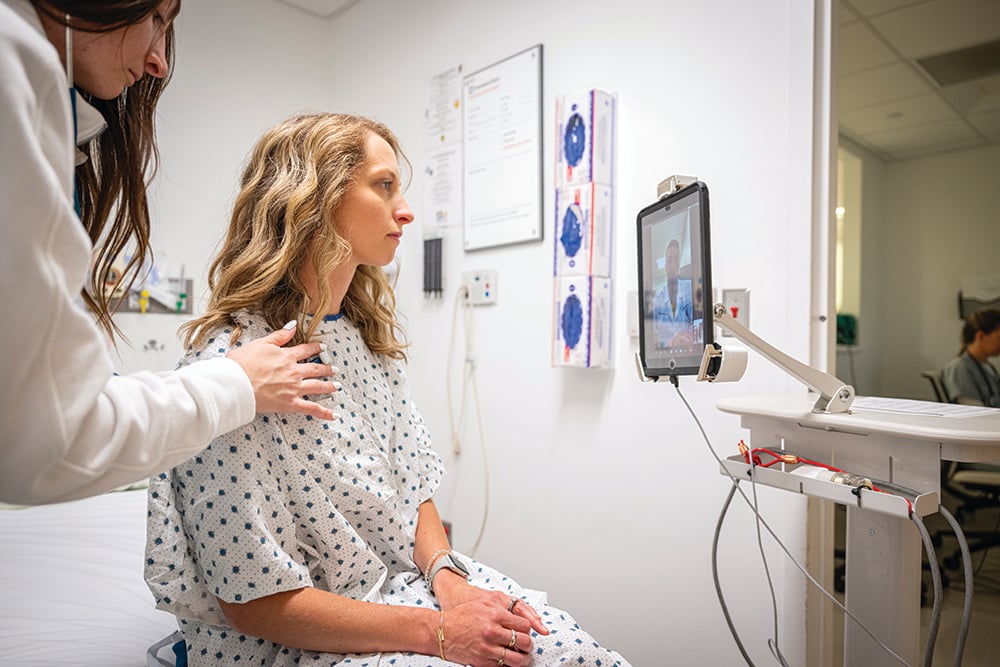COVER STORY
Right Care, Right Away
By John Soeder
Virtual triage connects patients in the emergency department with off-site physicians to accelerate diagnosis and treatment. | Photo: Shawn Green

VIRTUAL TRIAGE
At Cleveland Clinic, a new approach to emergency care is transforming what happens the moment a patient walks through the door. It’s called virtual triage — and it’s helping evaluate and treat patients faster than ever.
“The emergency department is all about time,” says Bryan Graham, DO, Medical Director of Cleveland Clinic’s Virtual Emergency Department. “Our job is to get to a diagnosis and treatment quickly, and virtual triage helps us do just that.”
Here’s how it works: As a triage nurse gathers a patient’s vitals and history, a board-certified emergency physician joins the encounter virtually via secure video. From an off-site location, the physician can ask clarifying questions, place diagnostic orders and kick-start care that might have otherwise been delayed.
“We’re identifying time-sensitive conditions like sepsis, strokes and heart attacks right from the lobby,” says Dr. Graham. “The sooner we can begin diagnostics and ask the right questions, the better the outcomes.”
The innovation came at a time of mounting pressures in emergency medicine: hospital closures, increasing patient complexity, staffing shortages and a rise in inpatient boarding. “We knew we had to adapt,” Dr. Graham says. “We didn’t have enough providers to staff triage in person around the clock, so we brought the doctor in virtually.”
Since virtual triage launched in 2023, Cleveland Clinic has sharply reduced the number of patients who leave without being seen. “At some of our busiest sites, that number is now nearly zero,” Dr. Graham says. The virtual triage program is also helping reduce the number of patients who leave before completing treatment, while enabling the system to maintain strong metrics for critical conditions.
Virtual triage doesn’t replace in-person care. Rather, it enhances it. Physicians, nurses and other caregivers work in concert to ensure a smooth experience. “It’s a team sport,” Dr. Graham says. “The physician supports the team on-site, and together they create a rapid-response approach right at the front door.”
The model now reaches across Cleveland Clinic’s Northeast Ohio hospitals and urgent care network. In 2024, the system managed nearly 50,000 virtual triage encounters and more than 3,000 urgent care consultations — preventing an emergency department transfer in roughly 30% of those cases.
For patients arriving at the ED, the result is a faster, more responsive experience. “It used to be that you might wait hours before seeing someone,” says Dr. Graham. “Now we’re out there in the lobby, getting tests started and getting care underway.”
Patients have grown increasingly comfortable with the model, especially as the virtual experience becomes more seamless. “At first, people were skeptical,” Dr. Graham recalls. “Now it’s second nature.” Soon the technology will further evolve, with new wall-mounted TVs replacing touchscreen tablets for improved patient interaction.
“We take pride in being a leader in emergency medicine,” Dr. Graham says. “This is another tool to ensure patients get timely, high-quality care from the moment they arrive.”
